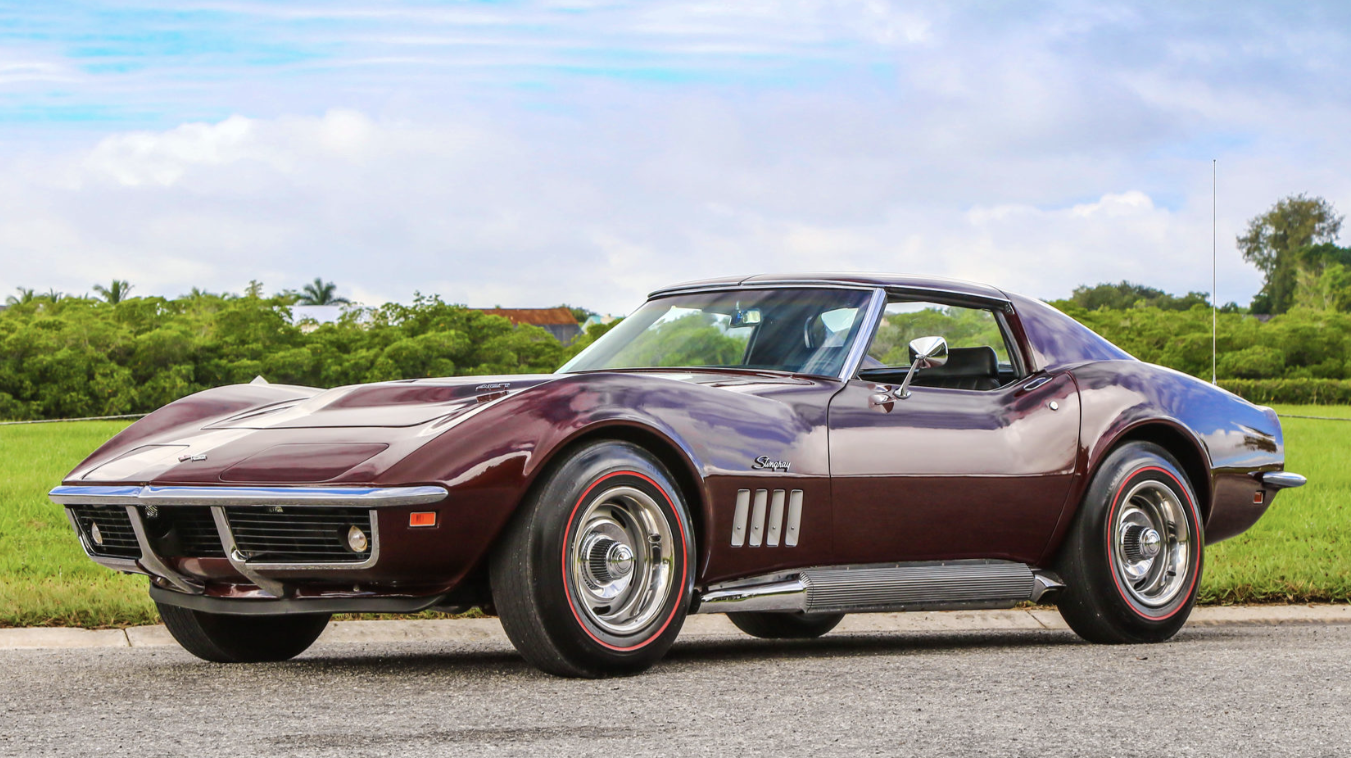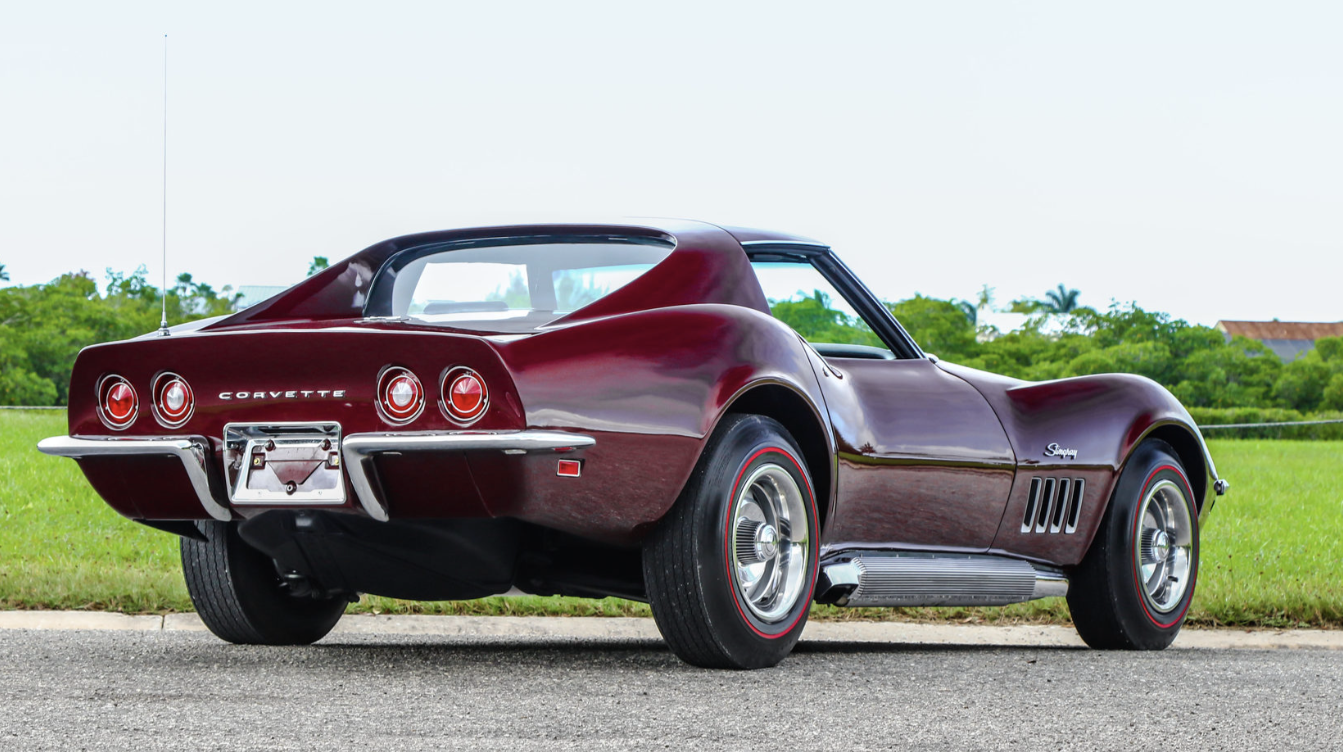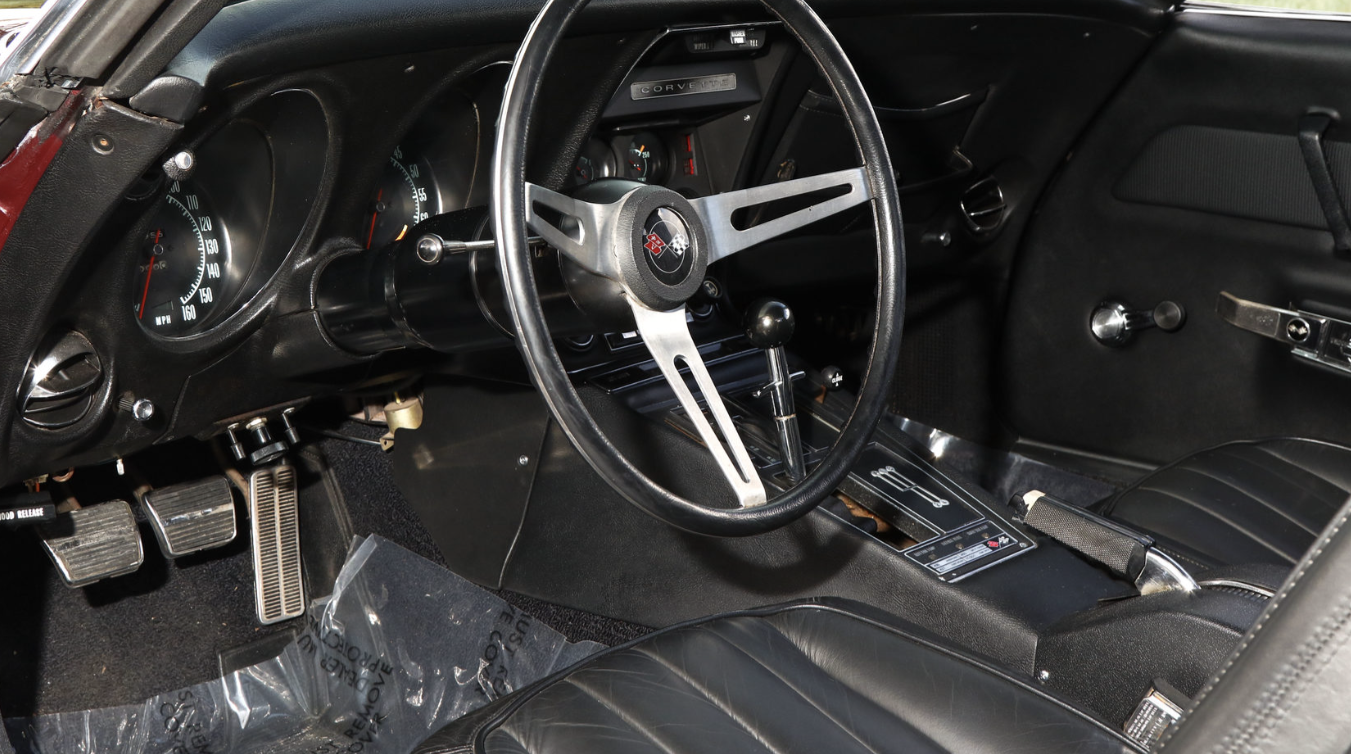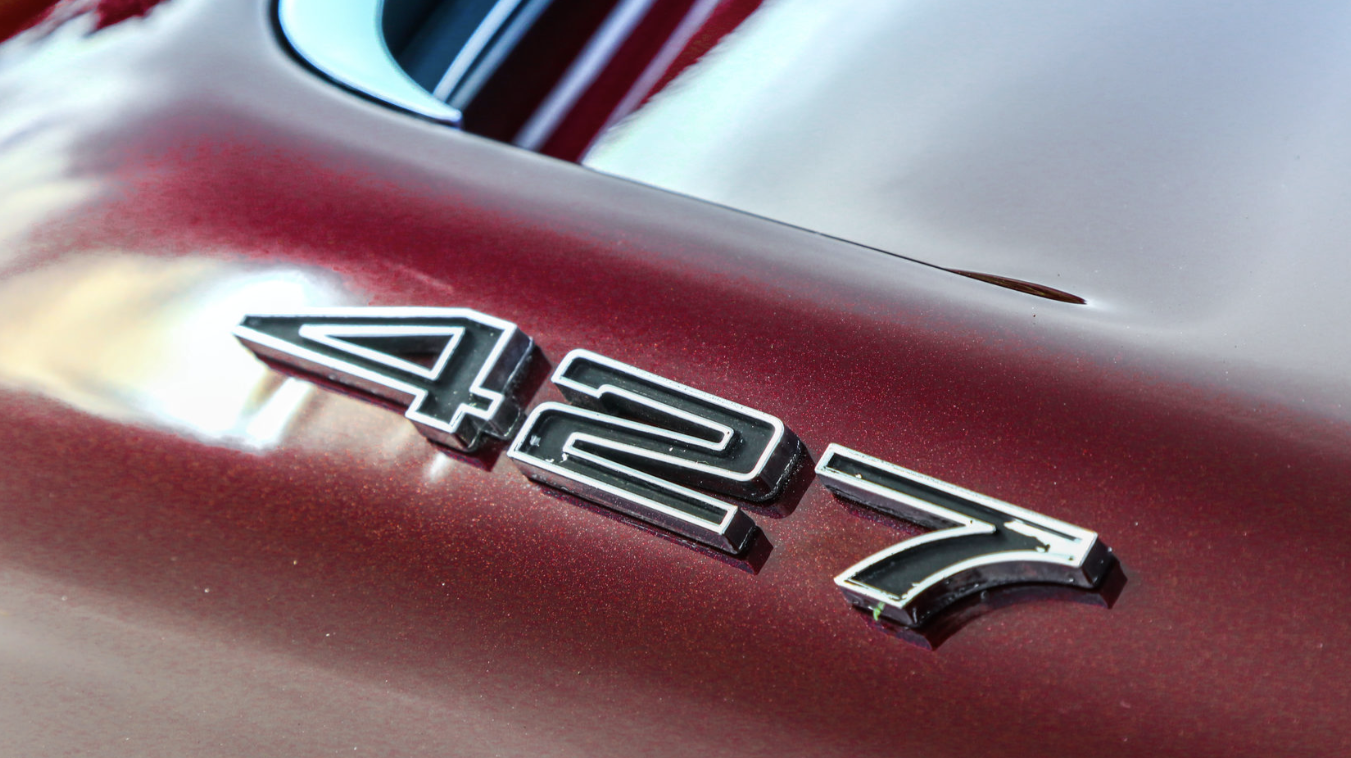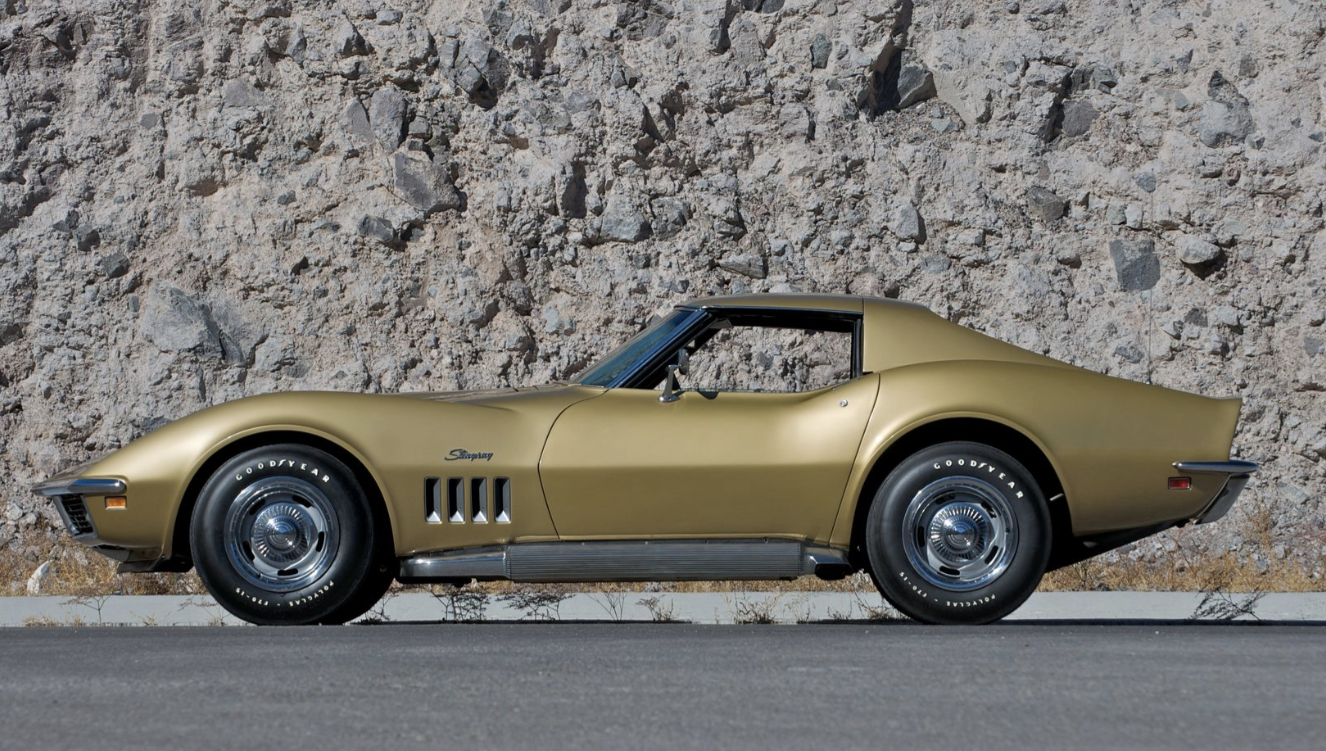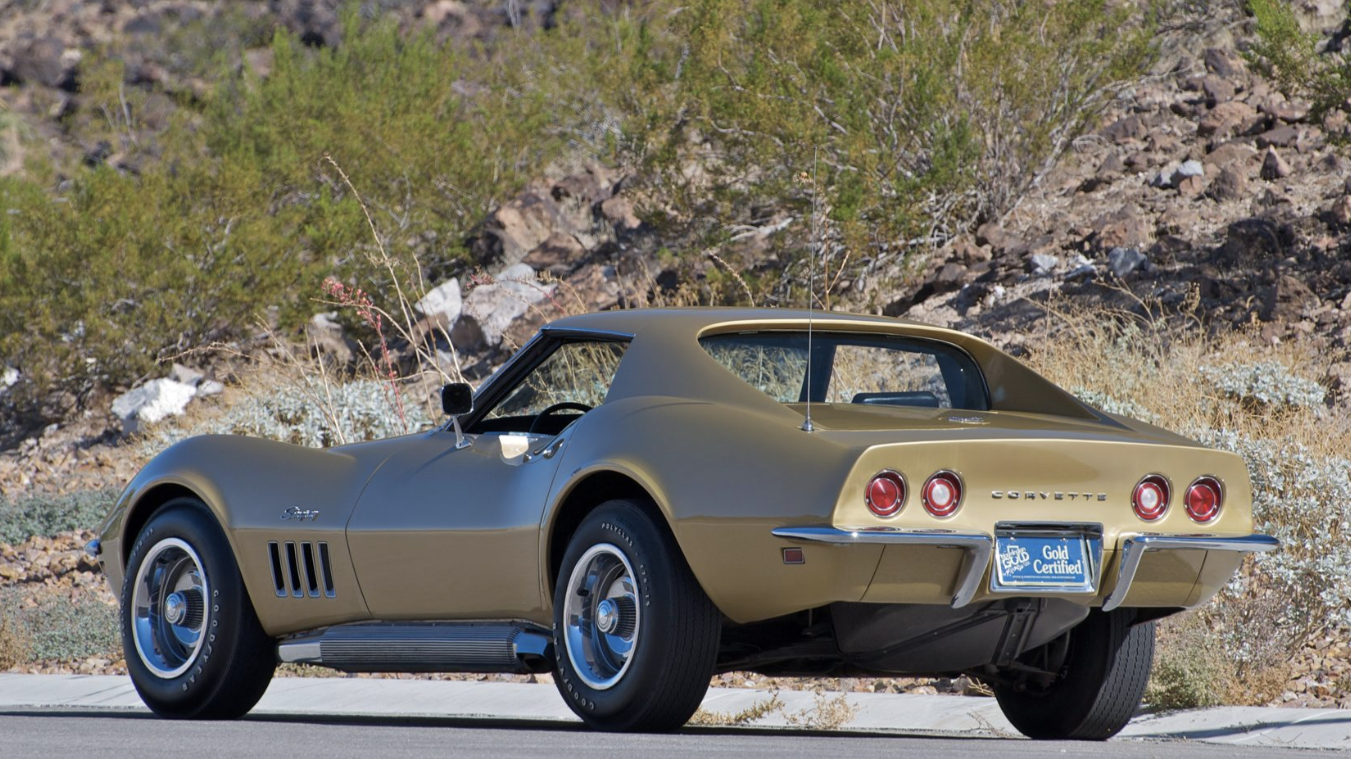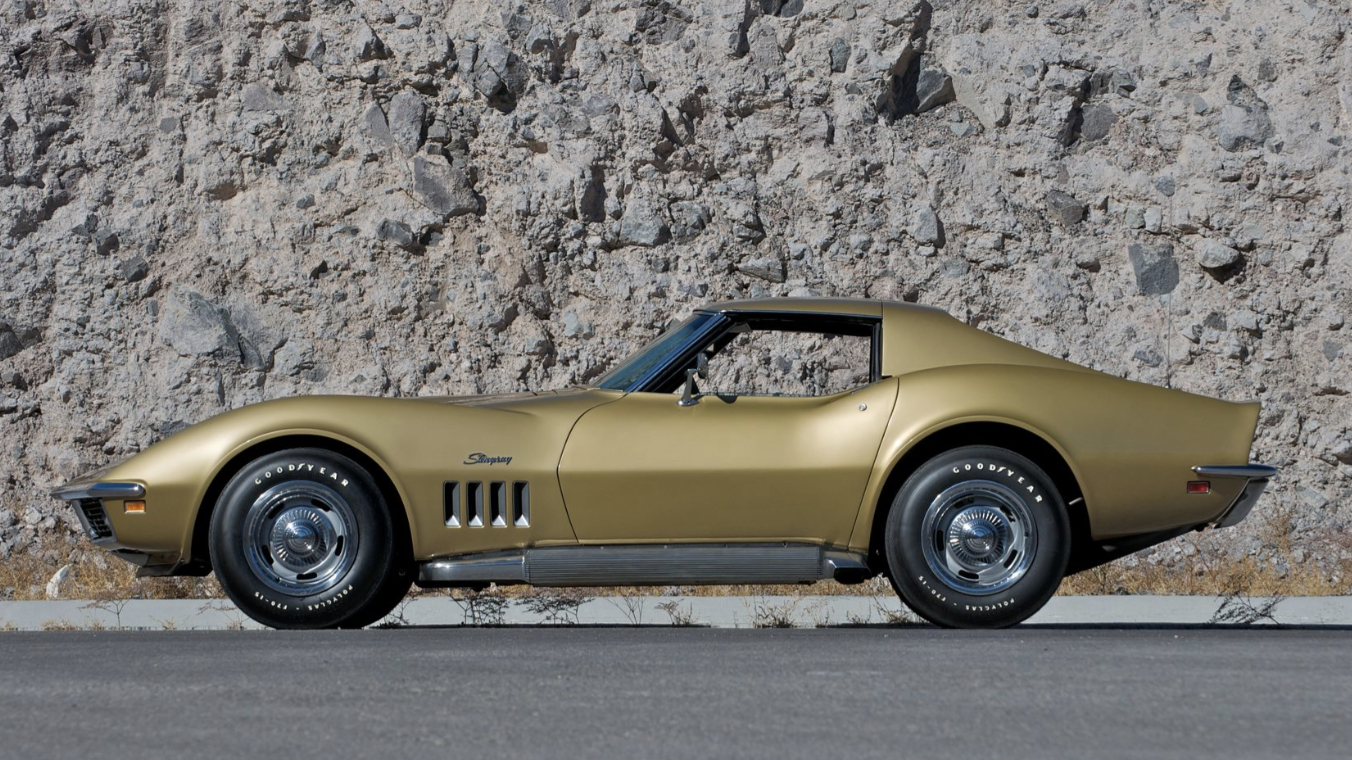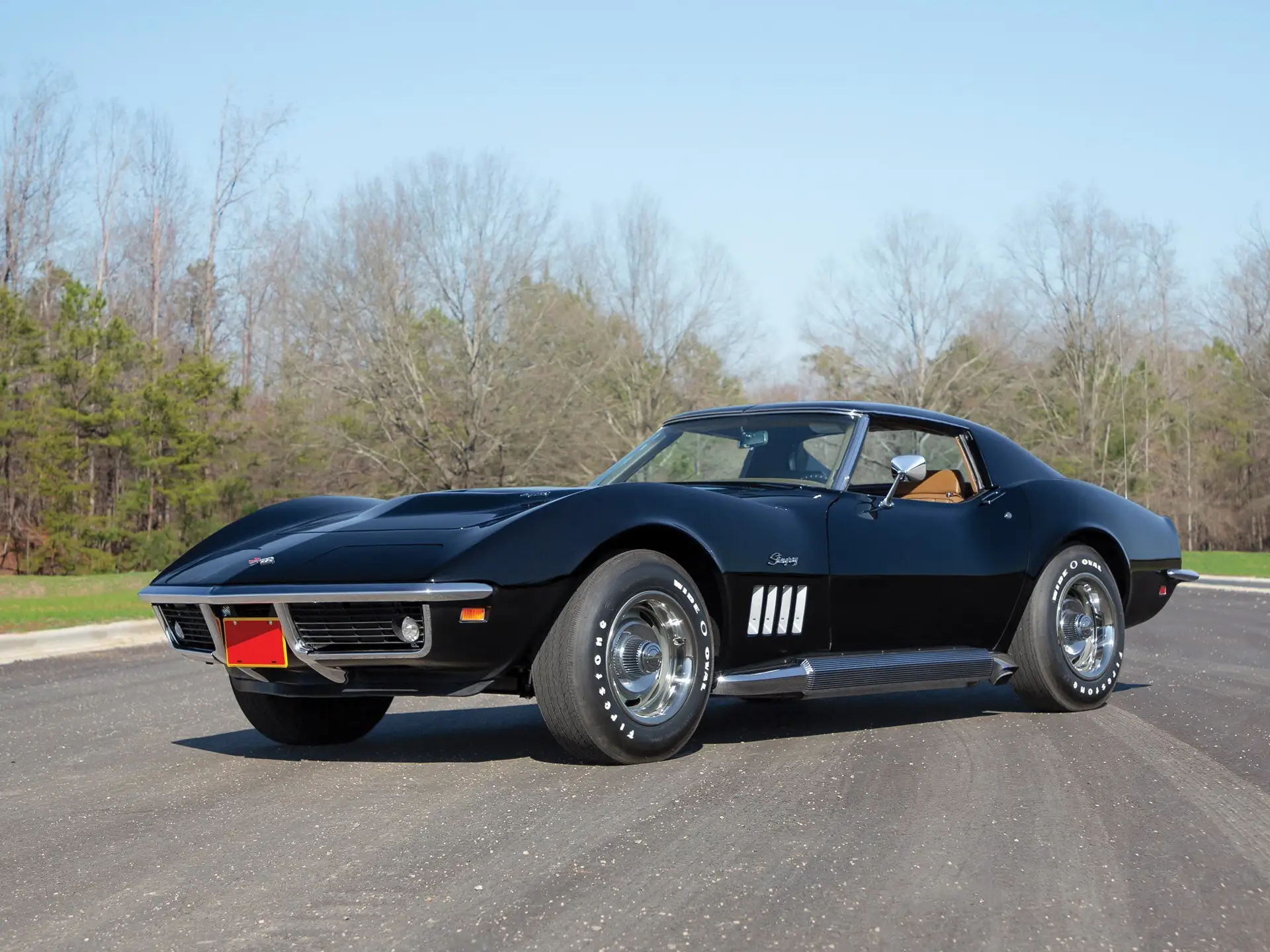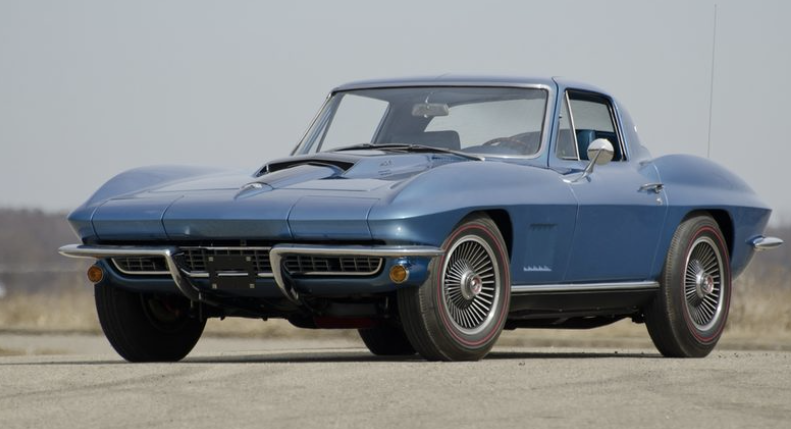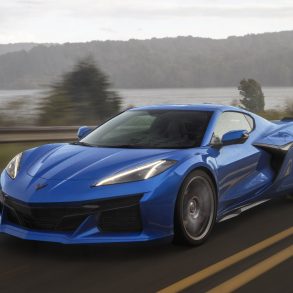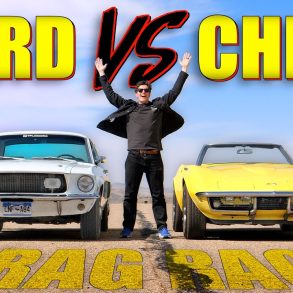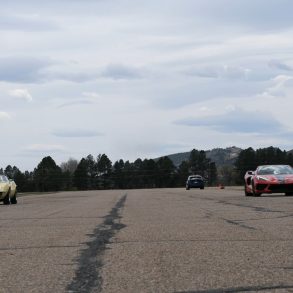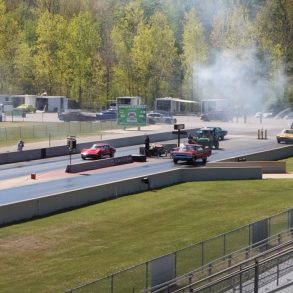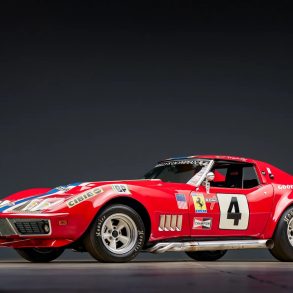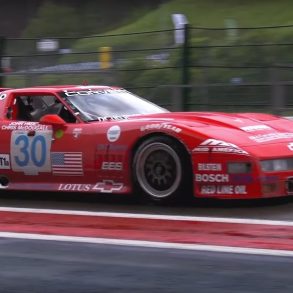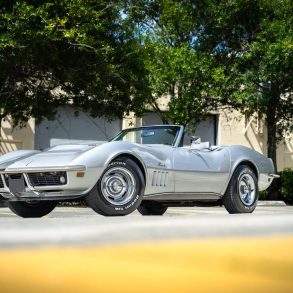1968-1969 Chevrolet Corvette Sting Ray L89 Tri-Power
In 1968, Chevrolet introduced the new Sting Ray body style of the Corvette, and the C3 Corvette design that was so well received it would continue without major changes until 1982. One of the most exciting options for the 1968 and 1969 model years was the L89 RPO, developed with power and blinding acceleration in mind. The 1969-1969 Chevrolet Corvette 427 as they were known was one special spec.
Standard engines in both the Coupe and Corvette Convertible were again the 300-horse Turbo-Fire 327 cubic inch V8 with a fully synchronized 3-speed transmission. Four other engines were available, the L79 350 horsepower high performance version of the 327 cubic inch small block, the L36 390 horsepower with a Rochester 4-barrel carburetor, the L68 400 horsepower with a Holley triple 2-barrel carb set up, the L71 435 horsepower also with a tri-power, the L89 same as the L71 engine but with much lighter aluminum cylinder heads, and the L88 engine that Chevrolet designed strictly for off-road use (racing), with 430 horse (really about 550 horse) that featured a huge 4-barrel Holley carb, aluminum heads, a unique air induction system, and an ultra-high compression ratio of 12.5:1.
A new optional Turbo Hydramatic 3-speed automatic transmission replaced the two-speed Powerglide with 4-speed manuals available in a M20 wide-ratio, a M21 close-ratio transmission, and the infamous M22 “Rock Crusher” heavy duty, close-ratio 4-speed gearbox, was also available for certain applications.
Physically, you could tell the small block cars from the big block cars thanks to their hoods. The small block engined cars had low-profile hoods, while all big block cars had domed hoods for additional engine clearance with twin simulated vents and “427” emblems on either side of the dome.
The 1968 Corvette had some industry first and new designs like as the it was the first American production car to use disc brakes at all four wheels, it had air flow through the body with full door windows closed, thanks to the new Astro Ventilation system with vent ports in the driver and passenger sides of the instrument panel, a fiber-optic system appeared on the console that monitored exterior lights and there was no glove box.
Perhaps the most balanced engine for the 1968 and 1969 model years was the L89 big-block. Based on the 435-horsepower L71, the L89 option uses Chevrolet’s rare big-block aluminum heads to further aid the breathing enabled by its solid-lifter cam, aluminum intake and triple 2-barrel Holleys; the L89’s additional power is extraordinary. Chevrolet started out with a four-bolt main, cast iron block, then engineers crafted a pair of high flow, lightweight, aluminum heads to top it off. Resting between the heads was an aluminum tri-power intake manifold with three Holley Model 2300 carburetors. While the L89 was rated at the same 435 horsepower as the iron-head L71, the L89 was known to produce slightly more power thanks to its larger exhaust valves (1.84 inches versus 1.72 inches). It also weighed about 75 pounds less, thus reducing unnecessary weight from the front end and helping handling characteristics.
The option didn’t come cheap though, the L89 aluminum head option cost $832.05 (which included the normal L71 engine in 1968). Its performance was worth the money though, with 0 to 60mph over in just 4.2 seconds and 0 to 100mph taking just 8.0 seconds.
The 1968 Corvette was truly a completely new car and a total of 28,566 buyers forked over to get one. Because of a UAW strike in early 1969 and a large number of unfilled orders, the newly appointed head of Chevrolet, John DeLorean, decided to extend the model year to 16 months. The extended model year helped Corvette set a new sales record of 38,762 vehicles. Only 390 1969 Corvettes were built with the L89 427 option and while the L89 option was chosen 624 times in 1968, it is still a rare beast relative to total production for those model years. The 427 CI engine was good for 435 HP and a strong 460 lb-ft of torque making it one of the best-accelerating cars of its time and a true collector car.


